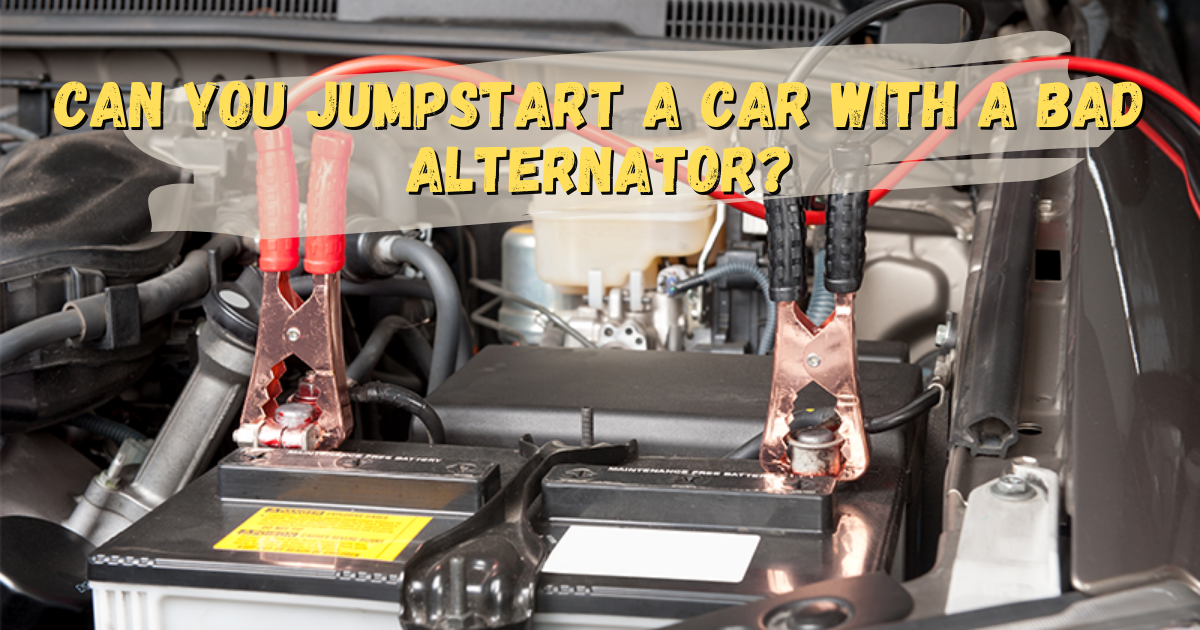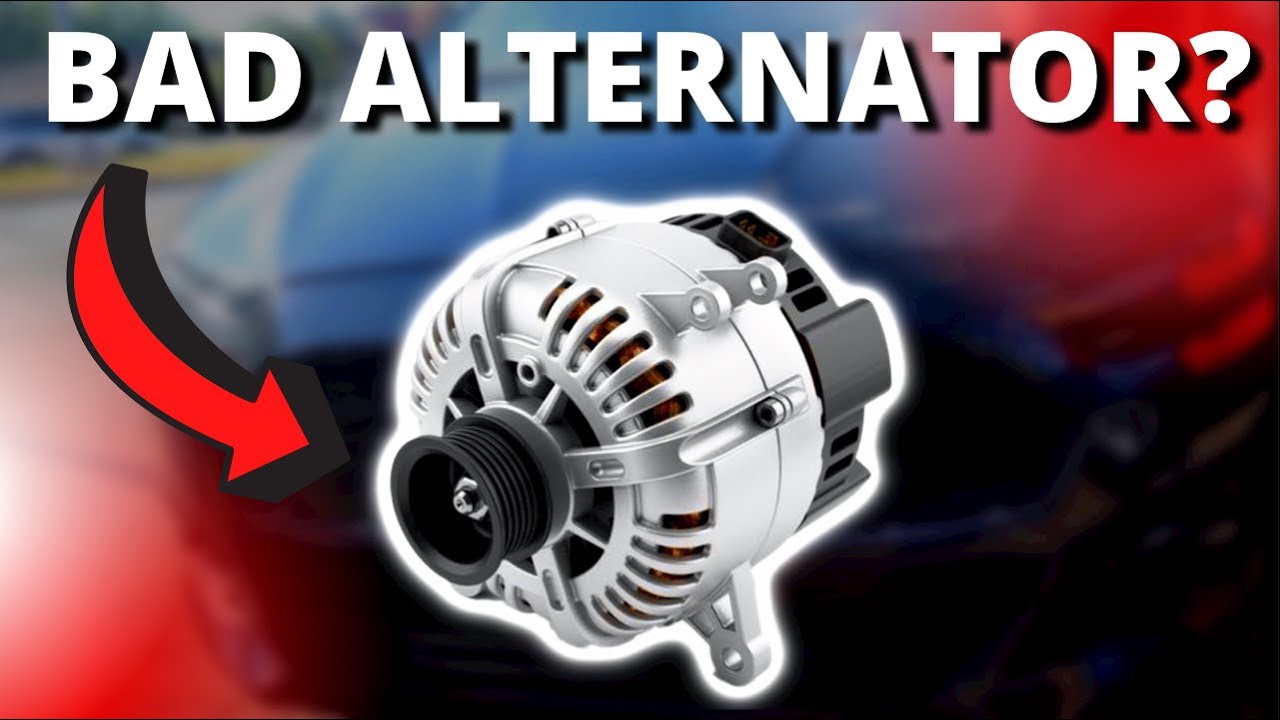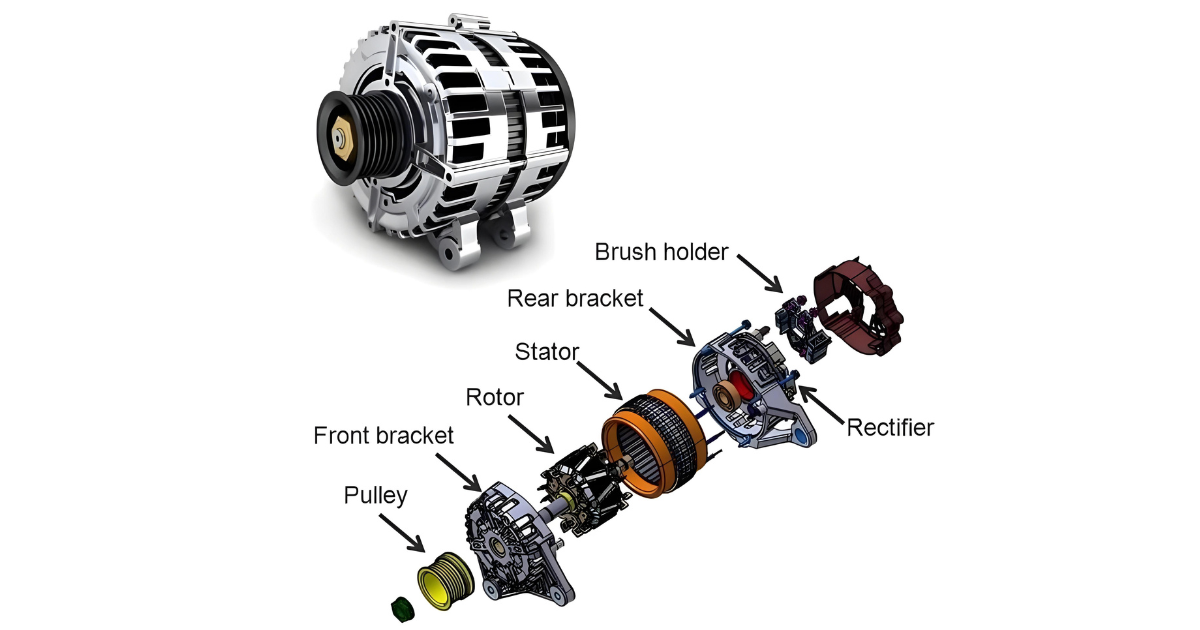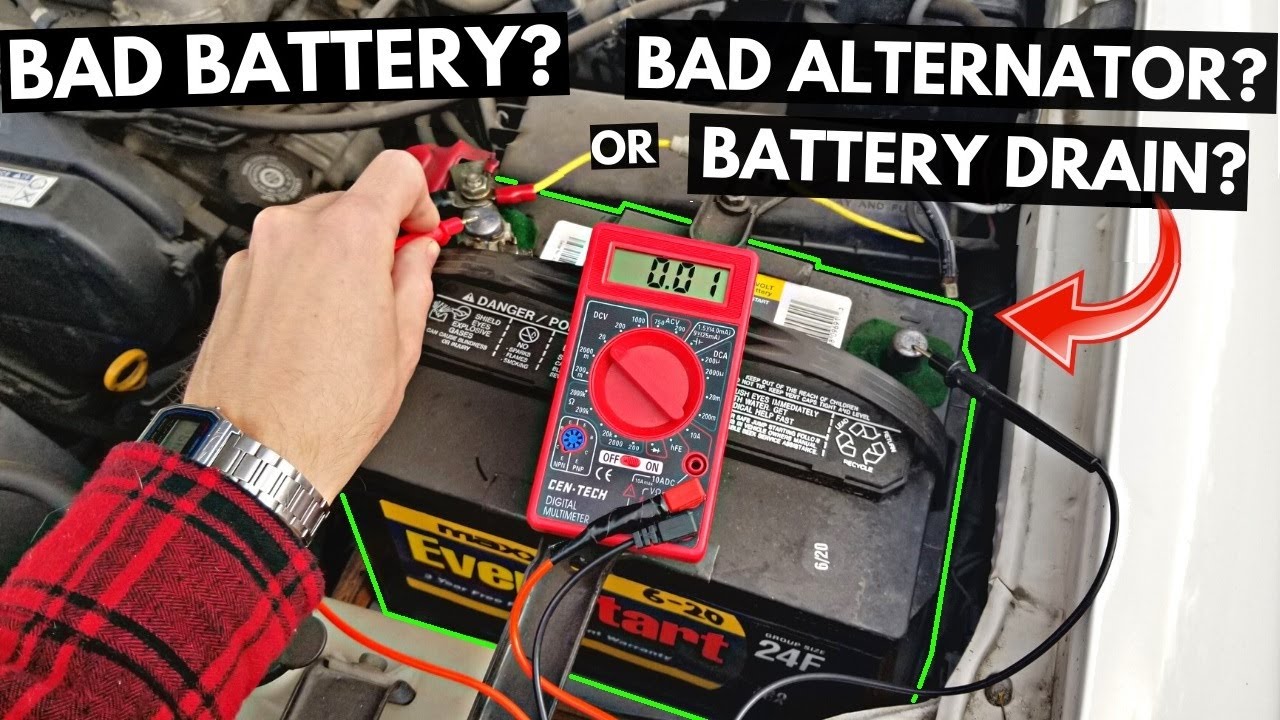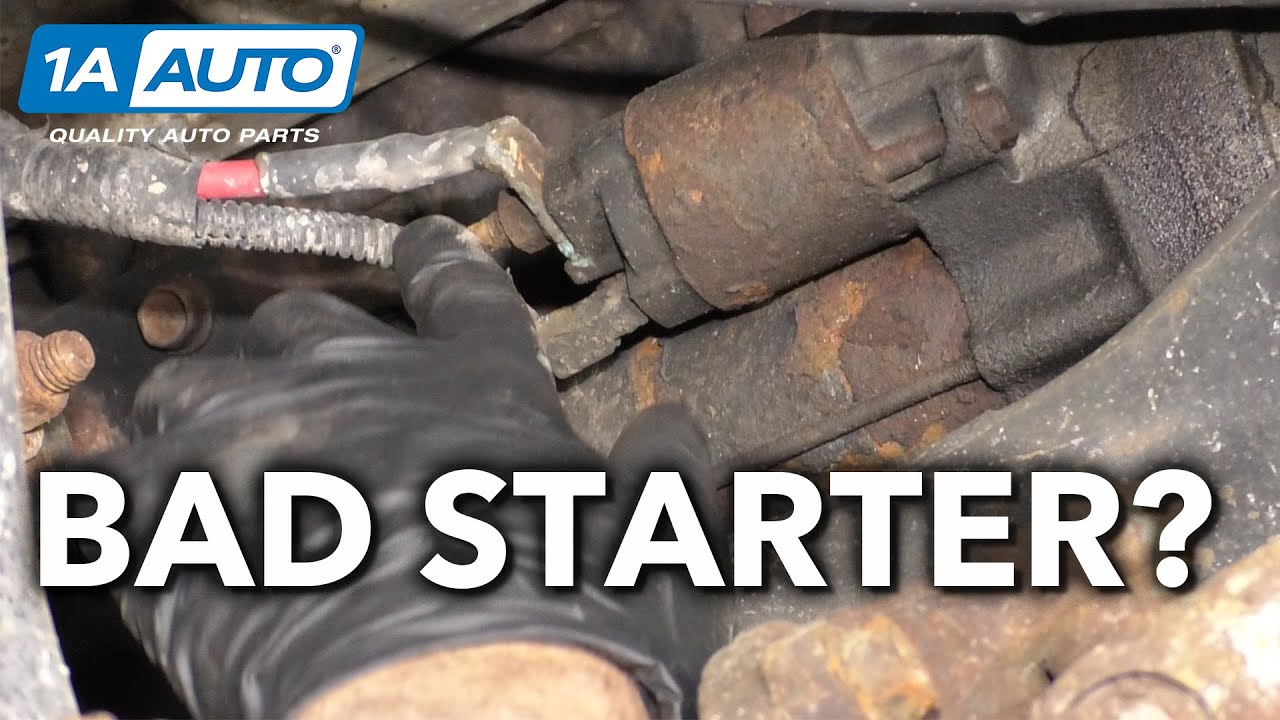Facing a car breakdown due to a bad alternator can be daunting, but it’s not the end of the road. Discover the ins and outs of safely jumpstarting your vehicle, even with a faulty alternator. In this enlightening read, we delve into the risks, the warning signs, and the temporary fixes to keep you moving until professional help arrives.
If the battery has enough charge to keep the engine going, it may be possible to jumpstart a car with a bad alternator in specific circumstances. However, it is important to replace the alternator as quickly as possible.
What is an Alternator in your Vehicle?

Your car’s alternator is a little generator powered by a belt or chain that regulates the combustion process. This belt turns a copper and magnet setup into an electromagnetic generator. Your car’s electrical systems and accessories would be useless without the alternator to charge the battery and keep them running.
Warning Signs Of A Failing Alternator
Problems with the car’s alternator can make it difficult to start the vehicle or keep the engine running for more than a few minutes. But before that happens, you should be aware of these seven warning indications of a failed alternator.
#1 Dim or Overly Bright Light
If your vehicle’s alternator fails, your electronics will experience erratic power. Usually, this happens when equipment doesn’t work well enough, like when headlights are too dim or too bright. There is a chance that the lighting in your vehicle will flicker or dim and brighten at odd intervals.
#2 Dead Battery

The battery will lose its charge more quickly than usual if the alternator isn’t properly charging it while the engine operates. Jumpstarting the car might help determine if the problem is with the battery or the alternator. But, if you jumpstart your car and it continues to run, it may be time to get a new battery.
If you jump start your car and it dies again soon after, though, it could be because the alternator isn’t supplying enough power to the battery.
#3 Slow or Malfunctioning Accessories
When your vehicle’s alternator isn’t functioning properly, its failure to provide adequate power to the car’s electronics might cause those components to function slowly or not at all.
The alternator may have a problem if the windows take longer than usual to roll up or down, the seat warmers don’t feel quite right, or the speedometer and other gauges start acting erratically.
#4 Trouble Starting or Frequent Stalling
Being unable to turn over the engine could be a sign that your alternator isn’t doing its job. This means that instead of hearing the familiar purr of your engine when you turn the key in the ignition, you’ll only hear a clicking sound.

Alternatively, if your car repeatedly stalls while driving, it may indicate that the spark plugs aren’t receiving enough electricity from the alternator to keep the engine going.
#5 Growling or Whining Noises
Automobiles can make a wide variety of strange noises, some of which are completely innocuous, while others may point to more serious issues. The alternator should be checked immediately if you hear any growling or whining sounds from the engine compartment.
If the belt that rotates the alternator’s pulley is off-center or rubbing against the pulley’s side, a growling or whining noise will occur. This noise can also indicate that the bearings supporting the rotor shaft are failing.
#6 The smell of Burning Rubber and Wires
Any time your alternator begins to emit a noxious stench, whether, from burning rubber or wires, it may be time to replace it. The drive belt for the alternator is subject to constant tension and friction, and it is located near the hot engine, which can cause it to wear down and give off a burnt rubber odor.
You may also detect a burning odor, similar to an electrical fire if your alternator is overworked or its wires are frayed or broken. Wires can become dangerously hot when an overworked alternator tries to force too much power through them. Heat is generated when electricity flows via frayed or damaged wires, and a foul odor is released.
#7 Battery Warning Light
It’s easy to assume the battery is at fault whenever the dashboard battery warning light illuminates. But, if your car’s battery warning light is on, it suggests a problem with the electrical system as a whole.
The optimal operating range for an alternator is between 13 and 14.5 volts. The battery warning light on your dashboard will come on if your alternator’s output voltage drops below a safe level. The battery warning light will illuminate when the alternator’s voltage output is too high due to the load it is carrying.
How To Jumpstart a Car With a Bad Alternator

Your car’s alternator maintains a fully charged battery. It is essential to the operation of your car in every way. If the alternator fails, jumpstarting the car is the only way to go to a technician (you’ll need a new alternator as soon as possible). Here are some suggestions for how to achieve that:
Look for a Power Source
To jumpstart a dead battery, you need access to another fully charged one. You first need a helping hand to come and jumpstart your system. But make sure the other battery is fully charged. Yours will absorb its life power; therefore, the procedure will fail if it isn’t fully charged.
Let It Run
It would be best if you let the second engine run for three to four minutes before attempting the jumpstart. Your car must be turned off (as if you have a choice), and the jumper wires must be attached in advance, but you can speed things up by ensuring the other car is completely primed.
Deactivate Accessories
This includes the air conditioner, heater, radio, phone charger, GPS, and other technological features in your vehicle. Remember that your car’s computer system and fuel injectors need to be actively engaged for optimal performance.
See a Mechanic ASAP
If your plan is effective, you should head straight to the auto shop. Remember that you may only have 5 minutes to get to the shop, so if it’s too far away, you’ll require towing. In addition, you should stay off the roadway and any major interstates. For maximum effectiveness, you should drive slowly.
Is it Dangerous to Jumpstart a Car with a Faulty Alternator?
It’s unlikely that either vehicle would be damaged during the jumpstarting process if appropriately done, but driving a modern car with a faulty alternator is unsafe.
Almost every part of an automobile depends on the alternator, and newer cars are especially vulnerable to component failure due to their increased sensitivity to voltage drops. Some examples
Electric Water Pumps
Electric water pumps remove water from the radiator and circulate it through the engine to maintain optimal vehicle performance. If your water pump malfunctions while driving, the engine could overheat and be severely damaged.
Power Steering
Certain automobiles have electrically powered power steering. Without the assistance of the power steering pump, steering can be difficult, putting you in danger because you won’t be able to maneuver or steer rapidly.
Fuel Pump
The fuel pump is an electric component used to supply fuel to the engine and is a standard feature on even the earliest models of automobiles. The engine will stop working if the fuel pump cannot deliver fuel.
FAQs
Can Your Car Run with a Bad Alternator?
With a dead alternator, a car can only keep running for a short while. This occurs due to the fact that the alternator charges the battery whenever the engine is turned on. If the battery dies while driving, it won’t start again.
Keep in mind that the water pump, power steering, and fuel pump are all dependent on electricity and could be damaged if you drive your car with a dead or failing alternator.
How do I know if my alternator isn’t working?
Even when the car’s engine is running, the voltage is still very low. Also, revving the engine faster doesn’t make the line voltage go up. You can also, of course, run diagnostics.
How Far Can You Drive With a Bad Alternator?
There is no clear answer to this question. Too many things affect how long you can drive with a bad alternator, some of which are:
State of the alternator
State of the battery
Electrical Load (AC, Headlights, etc.)
Car Age
Speed
A very rough estimate would be around 20 minutes or 13–15 miles. If you drive slowly and keep your RPM low, you can make it last longer. If your car’s battery is low or you just had it jumpstarted, it’s unlikely that it will run for more than 10 minutes.
How do you tell if it’s your alternator or your battery?
Jumpstart your car. If you can start the engine, but it dies soon after, it’s likely that the car’s alternator can’t charge the battery. On the other hand, if you jumpstart the car and it won’t start on its own later, it’s probably because the battery is dead.
How long does it take for a bad alternator to drain a battery?
An alternator is an important part of your car because it charges the battery and gives the car power. But if your alternator starts to break down or stops working, it can drain your car’s battery in less than 30 minutes. This will leave you in the middle of nowhere with a dead battery and no way to get home.
Final Thoughts
As you can see, there are ways to start a car with a bad alternator. But the question is whether or not that car is safe to drive. Start the engine and look at the dashboard. If there are no errors or warnings, drive to the repair shop.
Also, if you are using car jumper cables, having two cars connected for a long time can overload the alternator and charge controller of the car with a good battery, so keep an eye on its dashboard.

